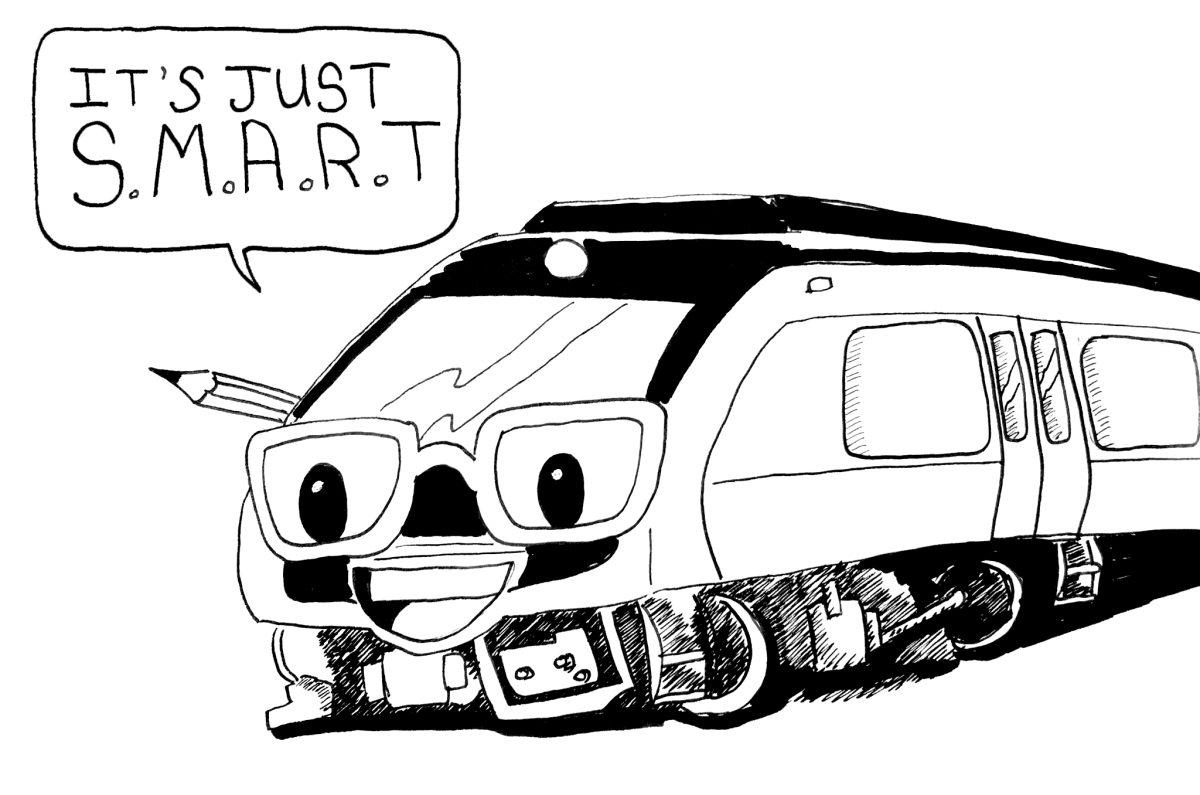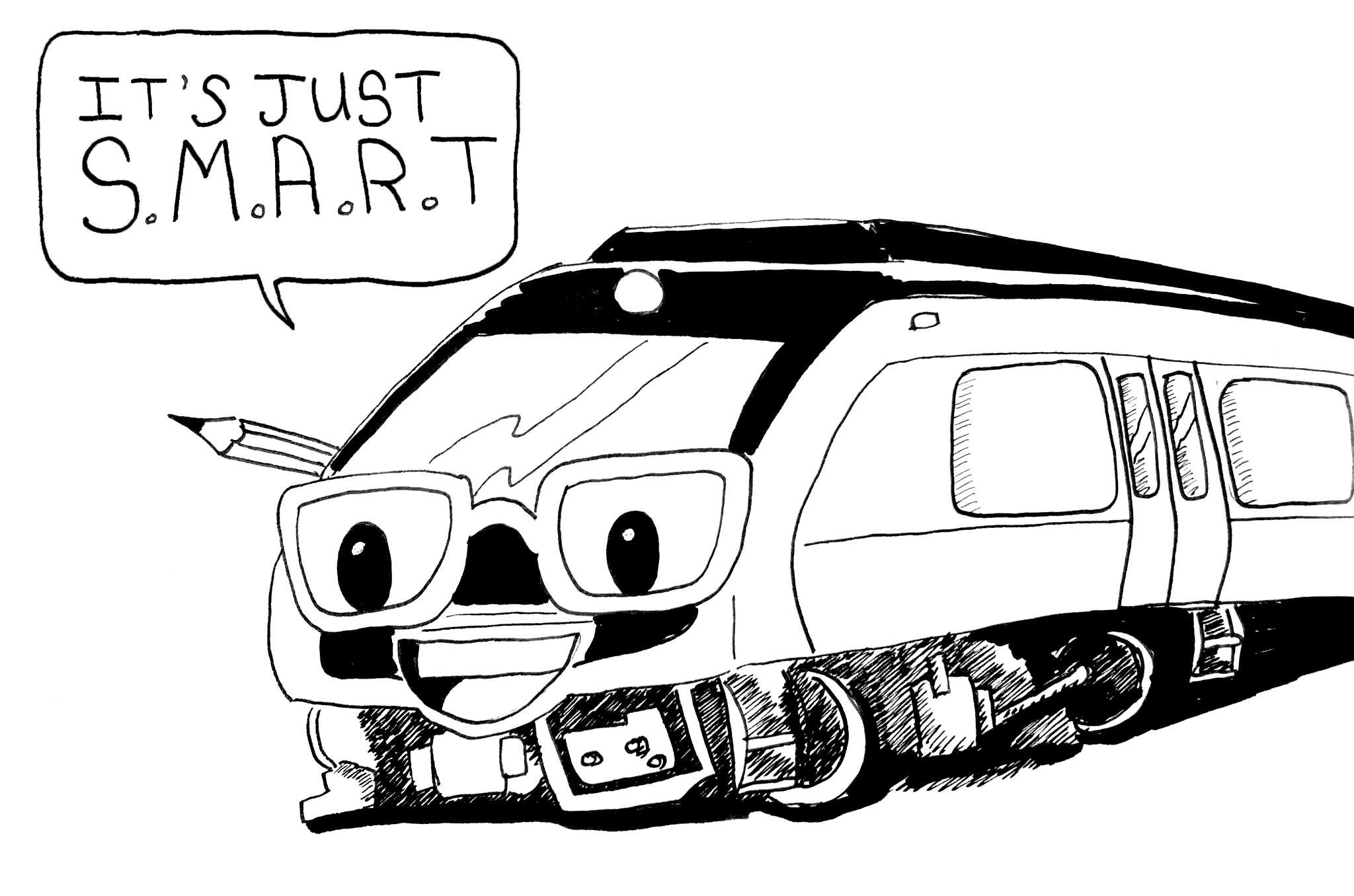The Sonoma-Marin Area Rail Transit unveiled its new train at the Cotati train station April 7 before an excited crowd, including many political leaders who have worked hard in seeing this investment—one approved by a majority of voters nearly seven years ago—become a reality.
The SMART rail system is scheduled to run 70 miles from Cloverdale to Larkspur with stops in multiple cities such as Santa Rosa, Windsor, Cotati and Rohnert Park.
Data from the SMART environmental impact report projects there will be 5,000 to 6,000 passenger trips per day on the system when it starts service next year. More people will ride the train heading north by 2025. Also, more people are projected to ride the train during the morning and evening hours as opposed to midday.
The rail transit system won’t officially begin operating until the end of 2016, but its economic, social and environmental impact in context to Sonoma State University is important to ponder. As with anything new and innovative, there are arguments on both sides, but the rail system seems to be getting a positive reception.
Furthermore, data from Sonoma State’s factbook projects about 9,300 students who attend class on campus and who presumably travel by car to different areas when not in class or in their dorms or apartments. Assuming half of said students are car owners and would like to lower their gas expenses, the rail system is a fantastic alternative.
For example, if a student decides he or she wants to go to a restaurant in Petaluma and prefers not to spend time stuck in traffic and paying for gas to get there, the option of saving money is by utilizing the rail system.
The administration at Sonoma State should help students by investing in a shuttle, taking riders to and from the Cotati station. But even without such a shuttle, the rail system is still environmentally and economically friendly in terms of how many cars would be off the road and money saved, as well as a decrease in carbon dioxide in the atmosphere from unused cars.
Safety could be a concern as pedestrians and drivers will need to get used to having a passenger train coming through the county for the first time in 50 years. But it’s hard to think of negative impacts in the community.
A hot topic is the noise from incoming and outgoing trains in populated areas. But data from the SMART supplemental environmental impact report projects the noise level will be at around 54 decibels, or dBA, in a span of 50 feet.
That’s a few decibels higher than an operating dishwasher, according to the California Department of Transportation. With this knowledge, it’s obvious the noise from future operating trains is not much of an issue.
The rail system could change the demographics of Cotati and Sonoma State. With the possibility of people from different backgrounds continuously coming in and out the city, a population shift as well as increase in diversity are likely. This might in turn help the local economy and promote diversity at Sonoma State in general.
Apart from the above projections, the rail system will arguably have an impact on students at Sonoma State as well as Cotati. Whether it’s saving gas money, decreasing carbon footprints or stimulating the local economy, the SMART train system is a step forward toward a greener future, locally and nationally as well as economically and environmentally.
The STAR fully endorses and welcomes this opportunity for growth.





![[Both photos courtesy of sonoma.edu]
Ming-Ting Mike Lee stepped in as the new SSU president following Sakakis resignation in July 2022](https://sonomastatestar.com/wp-content/uploads/2024/04/CC4520AB-22A7-41B2-9F6F-2A2D5F76A28C-1200x1200.jpeg)



























